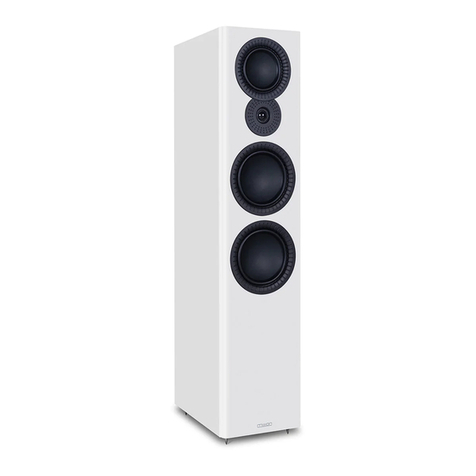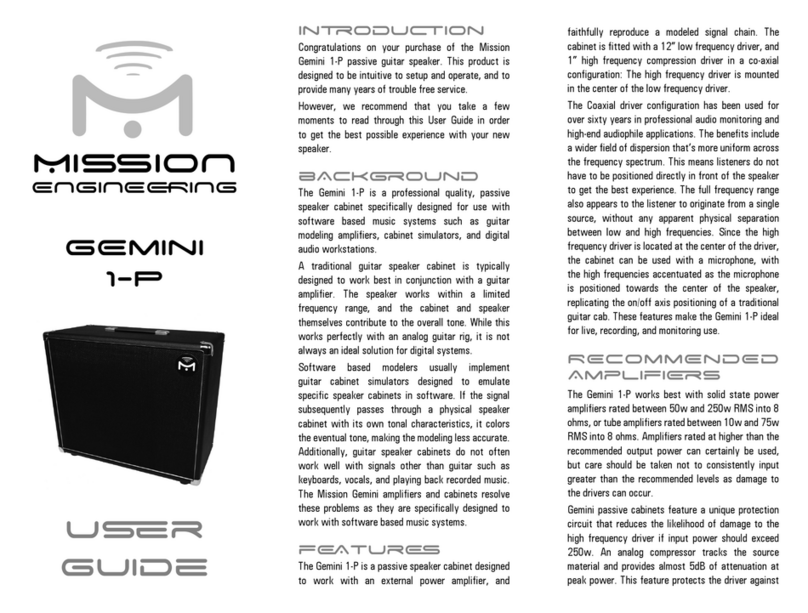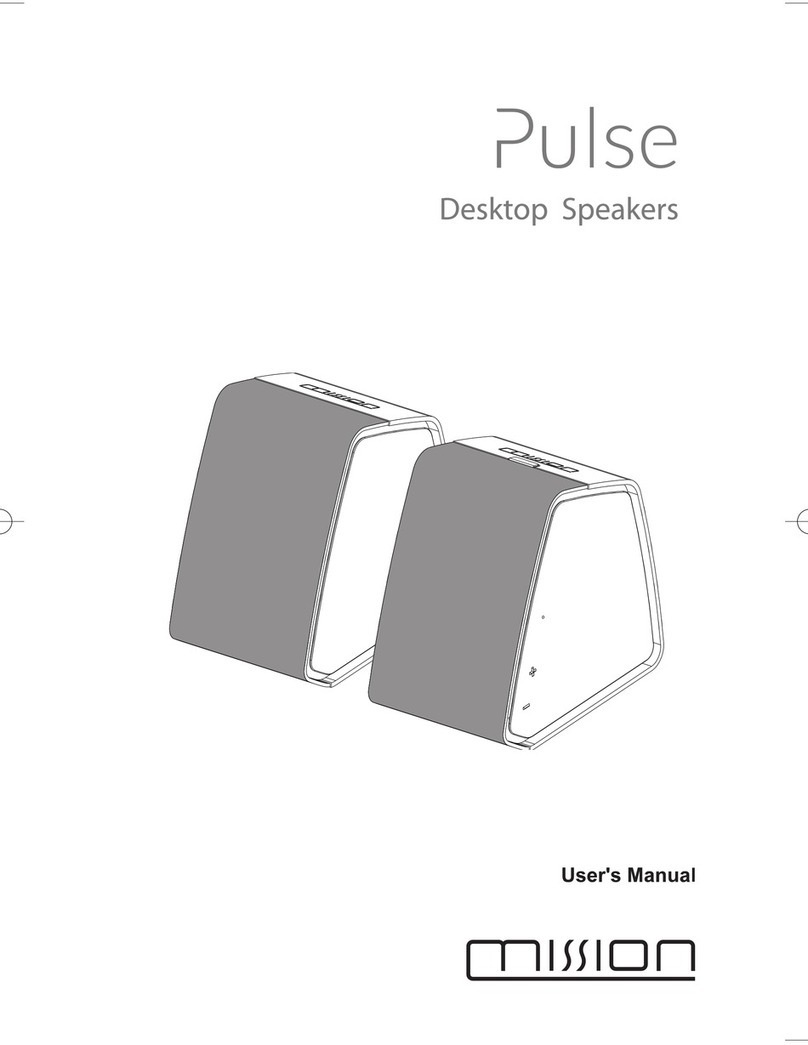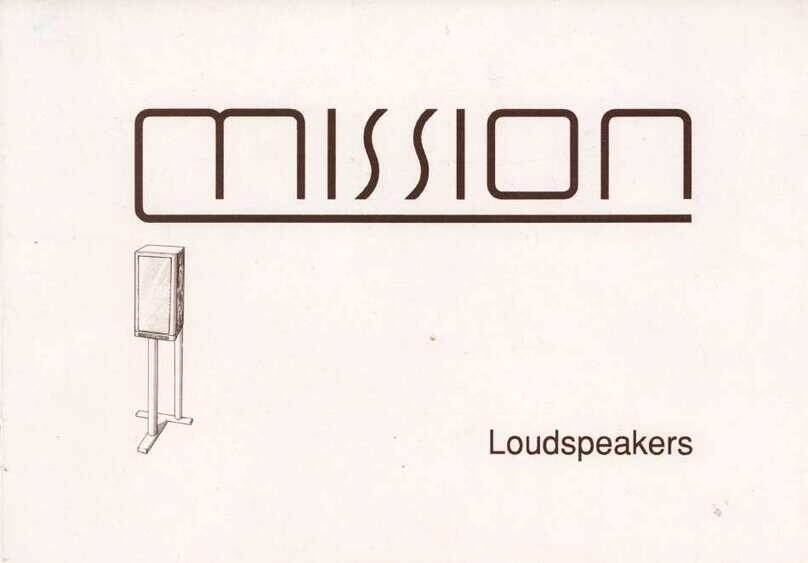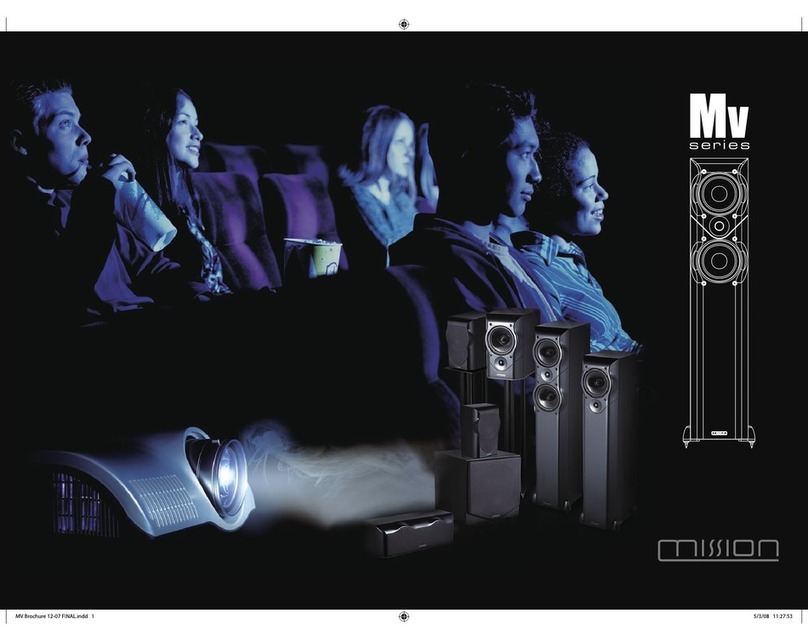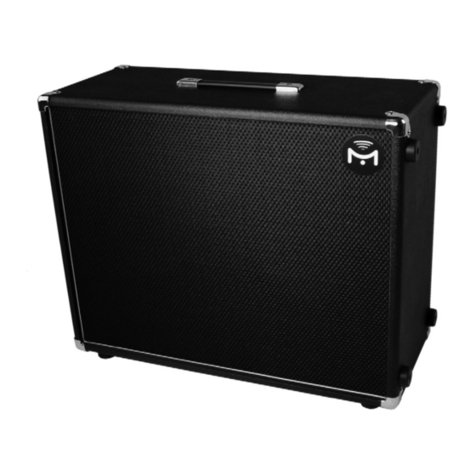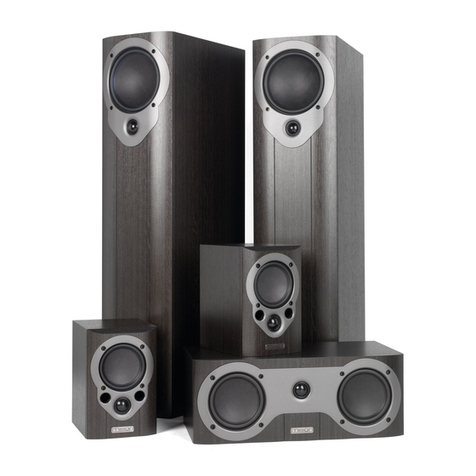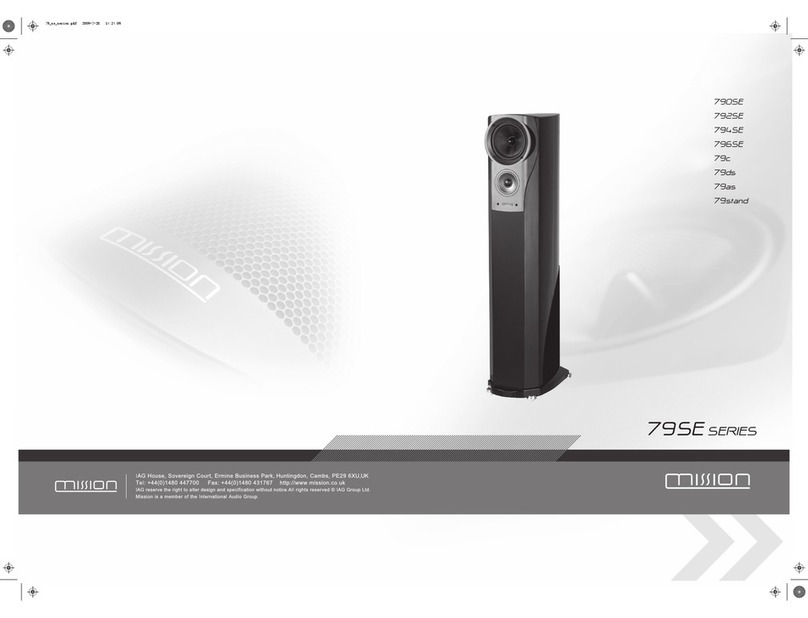!
!
!
!
!
!
Set the subwoofer power switch to OFF.
Turn the system Volume Control to minimum.
Re-check all system connections.
Connect the supplied subwoofer power lead to the IEC power socket on the subwoofer and connect the mains plug into the
wall socket.
Set the subwoofer volume control midway (12o'clock)
Switch on the mains power.
Switch on the subwoofer power switch. Check that the power indicator on the front of the cabinet glows. Now switch on the
system. Play a programme with extended bass and set the system volume to a reasonable level. Adjust the subwoofer volume
control to produce the desired level of bass.
If the bass is indistinct or lacks depth, the Phase switch may need adjustment. Set the switch to 0º and listen
carefully to some music with extended bass. If there is insufficient bass output from the sub-woofer set the Phase switch to 180º.
Select the position which produces the most natural, extended bass.
This adjusts the blend between the subwoofer and the main speakers. and enables the system to be set up
for optimum bass performance. The higher settings are for use with bookshelf loudspeakers, the lower settings for large
floorstanding models. If you choose too low a setting with small speakers, there will be a ‘hole’ in the bass response; too high a
setting with large speakers will result in the upper bass becoming bloated.
In normal mode the subwoofer is permanently on. This may result in low level hum or noise if the rest of the
system is switched off and the subwoofer is left switched on. Setting the AUTO switch to ON automatically turns the subwoofer on
when a signal is detected at any of the inputs and turns it off (Standby Mode) after a period of inactivity. We recommend the AUTO
switch be set to ON for normal operation.
In AUTO mode the indicator on the front of the subwoofer will glow RED when the unit is in Standby and GREEN when operational.
If your subwoofer is disconnected from the mains or the Power switch is “Off”, the indicator will be extinguished.
When the system is not in use for extended periods, we suggest you switch off the subwoofer to protect it from switching noises.
As the ear is unable to detect the direction from which deep bass originates, this allows freedom in positioning the subwoofer.
Varying the distance from the wall alters the amount of bass. Some prefer to place the subwoofer against a room corner. This
arrangement gives more bass at the possible expense of clarity.
Many digital AV processors require you to specify the size of speakers in the various channels. These are
usually ‘Large’ or ‘Small’. We recommend that you set the centre and surround speakers to 'Small'. This will direct all the bass in the
system to the subwoofer and provide clean, deep and louder bass. Set the ‘Subwoofer’ option on the processor to 'On’ or 'Yes'.
Set the and to ‘small’. If you are using a digital AV processor the subwoofer crossover setting should be 85Hz.
Set the and to ‘large’. The may be optionally set to ‘small’. In this case the subwoofer crossover setting should be
55Hz. If you find the bass excessive, set the loudspeaker to ‘large’.
Once the loudspeaker settings have been finalised, put the AV amplifier into its “Test” mode (see your processor instructions),
Adjust the levels until all channels are equally loud.
You may need to adjust the subwoofer output level. Avoid setting too high a level or you will swamp the sound with bass which be
tiring to listen to and may limit the subwoofer’s ability to respond to large bass transients. Set a sensible level going into the
subwoofer. The subwoofer volume control should be between 12 o’clock and 3 o’clock .
If all the speakers are set to ‘Small’, the LFE channel will be combined with the bass from other channels and all this feeds into
the subwoofer. When you set the LFE level from your AV processor, use care with this setting as the LFE channel may contain
powerful low frequencies which, although normal in a cinema, may overload a domestic subwoofer.
If, during a programme, you hear popping or thumping noises coming from the subwoofer, immediately turn the AV Processor's
volume level down and then back off the LFE level. If this does not cure the problem, back off the volume level at the subwoofer.
Please read the relevant sections of your AV amplifier manual and familiarise yourself with the various issues. If you are unsure,
consult your dealer for help.
Fine Tuning
Setting Levels
PHASE SWITCH:
LOW PASS FILTER:
AUTO SWITCH:
LOUDSPEAKER SIZES:
Subwoofer Settings for Mv Front Loudspeakers
LFE:
Home Theatre Topics
Mv-2 Mv-4
Mv-6 Mv-8 Mv-6
Setting Up Your Subwoofer
8
Positioning Your Loudspeakers
Mission and loudspeakers should be placed on the floor
(ideally on spikes). Mission should be mounted on rigid
stands, ideally spike coupled to the floor.
Height is important: a stand should place the top of a speaker at ear
level to a seated listener. Shelf or bracket mounting is second best. The
distance from the wall can profoundly affect loudspeakers' sonic
performance. If your speakers are too close to the wall the bass will
boom and sound coloured. Moving them into the room may increase
clarity but tends to reduce bass output. When positioned correctly, the
high frequency response is smooth with well-defined, powerful bass.
Start with the speakers about 300mm from the wall and 1.8 metres
apart. The distance from each loudspeaker to the side wall should be
at least 500mm. Vary the distance between the two loudspeakers and
the distance from the wall until you get a perfect stereo stage.
If your loudspeakers are wired correctly, the sound should be full with clean treble and a deep, rich bass.
Mv-6 Mv-8
Mv-2 Mv-4and
>0.2m
>0.5m
>0.5m
1.5 - 3.0m
Your Centre loudspeaker should be sited the TV monitor, or
on a shelf in a console below the TV set. If you place the unit on top of
the TV, ensure the cabinet can stand the weight and the is
stable. your TV or your TV dealer if you are in doubt.
Connections: Connect the to the Centre loudspeaker terminals of
your AV amplifier
Mv-c
Mv-c
above
speaker
Consult manual
following the instructions in the previous section.
To wall mount the speakers: Ensure the wall is sound, free of
obstructions and capable of supporting the loudspeaker plus some
pulling force. You will need 2 wall fixings and 2 No. 8 Round Head
screws to suit your wall for each loudspeaker.
Connect each loudspeaker before you start.
Determine the height of the loudspeaker. Mark off a
horizontal line with two fixing centres at 236mm. Drill
and plug the holes. Screw aNo.8 screw into each hole
leaving 7mm protruding. Connect the connecting wire
to the loudspeaker but do not connect the cable to the
amplifier. Lift the loudspeaker up to the mounting
position. Align the keyhole slots over the screw heads
and gently pull down until the speaker is secure.
The Mission Centre Channel SpeakerMv-c
The is designed for wall mounting.
Now connect the to the Rear loudspeaker terminals of your AV amplifier
ollow the instructions in the previous section
Mv-ds
Mv-ds
f ing .
Place the speakers behind the
listening seat above head height 2-4 metres apart as indicated in the diagram.
You will need one wall fixing and one No. 8
Round Head screw per loudspeaker. Mark and drill one fixing hole. Connect
the connecting wire to the loudspeaker but do not connect the cable to the
amplifier. Attach the loudspeaker as shown above.
To wall mount the speaker:
The Mission Surround SpeakerMv-ds
5
6.0mm
b
7mm
No 8 x 40mm
d
c
f
236.0mm
e
Caution! Wall mounting should be carried out by qualified licensed sound contractors or technicians. All installation and
wiring should comply with relevant standards laid down by the competent authority in the country and place of installation.



